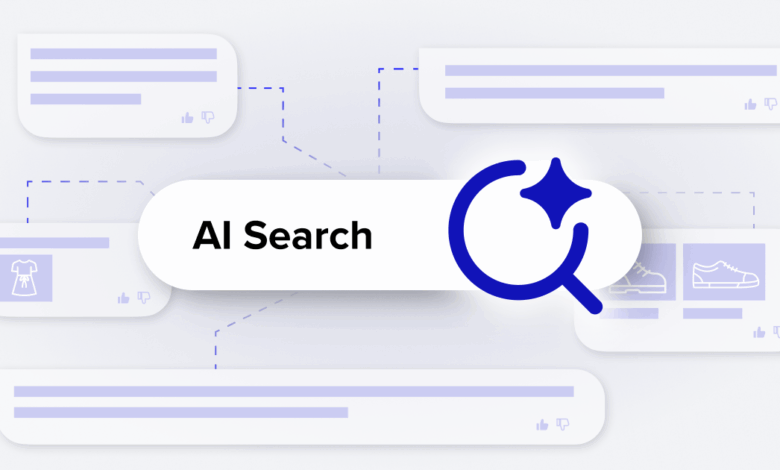
Search has long been synonymous with Google. It shaped the way people explored the internet – asking questions, comparing products, making decisions. But today, we’re at an inflection point. Generative AI is changing what it means to “search,” shifting discovery from static results to dynamic, personalised interactions.
As consumers increasingly turn to tools like ChatGPT, the implications for advertisers are profound. This is not the next phase of search – it’s a new era altogether.
AI-driven platforms are fundamentally changing consumer expectations and search behaviour. According to our research, one in five consumers already prefers AI-powered search tools over traditional methods, drawn to their ability to deliver seamless, personalised, and conversational results. For advertisers, this presents a golden opportunity should they seize it. The age of AI search is here, and brands that fail to evolve with it risk being left behind.
Understanding intent in the age of AI
The foundation of search advertising has always been built on intent – understanding what consumers want and delivering relevant results in real-time. AI supercharges this. Unlike traditional keyword-based systems, AI search engines use natural language processing, machine learning, and real-time data to understand user intent more deeply and deliver results in a way that feels intuitive and tailored.
Consumers are no longer satisfied with a list of blue links on the legacy search engine results page. They want responses to their queries delivered natively on the sites, apps, and platforms they use daily. Whether it’s product comparisons, local food recommendations, or answers to complex questions, AI search tools are meeting users where they are. This is a major leap forward for the consumer search experience and a powerful opportunity for advertisers to capitalise on.
Why brands must look beyond legacy search engines
Discovery is increasingly happening natively within the apps, websites, and digital ecosystems consumers already engage with daily, whether it’s through AI-driven assistants, retail apps, or vertical-specific platforms. This decentralisation of search represents a major change for advertisers. It’s no longer enough to focus campaigns exclusively on legacy search engines. To reach consumers effectively, brands must expand their search strategies to meet audiences where they are, across multiple platforms that are integrated with AI-driven discovery tools. As the search landscape modernises, advertisers who diversify their investments and embrace this broader, AI-enhanced environment will be best positioned to capture attention and drive engagement.
The power of conversational discovery
One of the key differentiators of AI search is its ability to make searching feel more engaging, relevant and intuitive. Instead of fragmented queries and manual refinement, users can engage in a natural, back-and-forth dialogue with AI tools, refining results through follow-up questions, contextual cues, and real-time data to find answers that fit their needs more efficiently.
This conversational approach is already proving to be a game-changer. It simplifies the path to discovery, reduces friction, and increases the likelihood that consumers will find – and act on – what they’re looking for. For brands, this opens up new creative formats and interaction points within search, allowing for more immersive and persuasive ad experiences.
How Gen Z is driving the AI shift
AI-powered search isn’t just a novelty. It’s quickly becoming the de facto method for specific types of discovery, especially among the younger, tech-native generations. Gen Z and younger Millennials are already leaning into tools like ChatGPT and AI-enhanced assistants for everything from shopping advice to academic support. These demographics expect search experiences to be fast, intuitive, and tailored to their needs.
For advertisers, this presents a crucial opportunity. If you want to engage the next wave of digital consumers, your search strategy must evolve. That means embracing AI-powered experiences, diversifying search media investment, and prioritising how you approach consumer search intent.
Positioning your brand for success
So, how should advertisers respond to this AI-powered revolution?
- Reevaluate search strategies – Traditional search advertising, placing ads at the top of search pages, is no longer sufficient. It’s time to experiment with native search integrations that leverage AI to deliver personalised, intent-driven results and enable conversational, real-time interactions between users and your brand.
- Invest in personalisation – Use AI to analyse behaviour, preferences, and context to create more targeted and meaningful search experiences.
- Reach next-generation consumers today – Target the younger demographics that are already adopting AI search. Meet them on the platforms they prefer with messaging and formats that resonate.
- Stay agile and curious – AI search is evolving fast. Keep testing, learning, and adapting your campaigns to remain relevant in this rapidly shifting environment.
The path forward
AI is not only reshaping how people search; it’s raising the bar for every brand interaction. Advertisers who embrace this shift will unlock smarter, more personalised ways to connect with audiences, earning both attention and long-term loyalty.
In this AI-driven future, those who innovate will define the new standard for consumer search.





